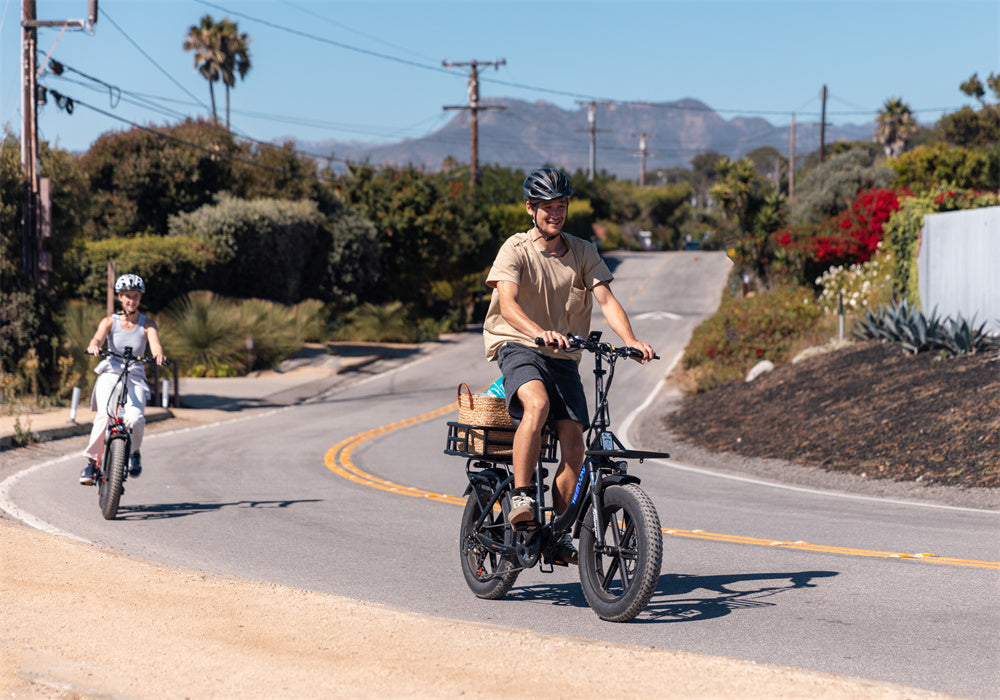Selecting the perfect electrical bike is more than a purchase—it's an investment in your lifestyle, health, and the environment.
With countless options available, understanding your needs and matching them to the features of the e-bike can simplify the decision-making process.
This comprehensive guide will walk you through every aspect of finding the best electric bike to meet your requirements.
Know Your Riding Needs
Identify your primary purpose for buying an e-bike. Ask yourself:
-
Where will you ride? City streets, mountain trails, or countryside paths all demand different bike designs.
-
How often will you ride? Frequent riders might require a more durable, high-performance model.
-
What’s your fitness level? Lower assist levels provide a better workout, while higher assist is ideal for long commutes or challenging terrains.
-
What’s your budget? Price ranges vary widely, from entry-level models to high-end premium bikes.
SEE ALSO Easy Commuting | Benefits Of Folding Electric Bikes

Types of E-Bikes
There are various categories of electric bikes, each designed for specific uses. Understanding these types will help narrow down your choices.
1. Commuter E-Bikes
Commuter electric bikes are ideal for city dwellers. They’re lightweight, easy to handle, and equipped with features like fenders, racks, and integrated lights for urban environments.
-
Key Features: Smooth tires for paved roads, ergonomic seating, and efficient pedal-assist systems.
-
Best For: Daily commutes, errands, and recreational city rides.
2. Mountain E-Bikes
For those who love off-road adventures, mountain e-bikes are designed with durability and power in mind.
- Key Features: Robust suspension systems, fat tires, and powerful motors for climbing steep trails.
- Best For: Off-road riding, trails, and rugged terrains.
3. Cargo E-Bikes
Designed for heavy lifting, cargo electric bikes are perfect for carrying groceries, equipment, or even kids.
-
Key Features: Extended frames, extra carrying capacity, and sturdy construction.
-
Best For: Families, delivery services, and businesses.
4. Folding E-Bikes
If portability is a priority, folding e-bikes are compact and convenient. They’re great for those with limited storage or those who frequently combine biking with public transportation.
-
Key Features: Foldable frames, lightweight design, and ease of storage.
-
Best For: Urban dwellers, travelers, and commuters with space constraints.
Battery and Motor Considerations
Battery Life and Range
Battery capacity directly impacts how far your electric bike can go on a single charge. Consider these factors:
-
Range Requirements: Longer commutes may require a battery with higher capacity, typically measured in watt-hours (Wh).
-
Charging Time: Most batteries take 3–6 hours to charge fully.
-
Removable Batteries: For convenience, removable batteries are easier to charge and replace.
Motor Type
The motor is the powerhouse of an e-bike. There are two main types to consider:
-
Hub Motors: Located in the wheel, these are common in affordable models. They’re quiet and provide a smooth ride but may struggle on steep hills.
-
Mid-Drive Motors: Positioned near the pedals, mid-drive motors offer better weight distribution and superior performance on inclines.
Frame Design and Build Quality
Material Choices
The material of the frame determines the weight, durability, and cost of the e-bike:
-
Aluminum: Lightweight and affordable.
-
Carbon Fiber: Extremely lightweight but more expensive.
-
Steel: Durable but heavier.
-
Titanium: Premium material, combining durability and lightness.
Comfort is essential, especially for longer rides. Consider adjustable seats, handlebars, and step-through frames for ease of use.
Tires and Suspension
Tire Type
Tire selection should match your riding environment:
-
Smooth Tires: Perfect for paved city roads.
-
Fat Tires: Ideal for sand, snow, and rugged trails. While they provide stability, they require more pedaling effort.
-
Hybrid Tires: Versatile and suited for mixed terrains.
Suspension Options
Suspension determines how well the bike absorbs shocks from uneven terrain:
Assist Levels and Gearing
Pedal Assist Levels
Most e-bikes offer multiple assist levels. These determine how much the motor helps you as you pedal.
-
Low Assist: Best for exercise and conserving battery life.
-
Medium Assist: Ideal for moderate commutes.
-
High Assist: Perfect for steep climbs and reducing physical effort.
Consider whether you need single-speed simplicity or a multi-speed system for tackling varying terrain.
Braking System
Safety is critical when riding at higher speeds. The braking system should align with your riding style:
- Mechanical Disc Brakes: Reliable and cost-effective.
- Hydraulic Disc Brakes: Provide superior stopping power, especially in wet conditions.
- V-Brakes: Suitable for lighter, budget-friendly models.
Integrated Features and Accessories
Modern electric bikes come equipped with convenient features. Look for:
-
Integrated Lights: For better visibility during night rides.
-
LCD Displays: Track speed, battery life, and assist level.
-
Racks and Fenders: Great for commuters and cargo bikes.
-
Smart Connectivity: Bluetooth-enabled bikes allow smartphone pairing for tracking and diagnostics.
Cost vs. Value
While electric bikes can be a significant investment, remember to weigh cost against value. More expensive models often come with better durability, advanced features, and superior performance.
Conclusion
Looking for a long range electric bike that’s reliable and stylish? Tesway Electric Bike has you covered.
Whether you’re commuting, tackling trails, or running errands, Tesway delivers powerful motors, long-lasting batteries, and a super comfy ride.
It’s all about great performance without breaking the bank. With Tesway, every ride feels effortless and fun!
FAQs
Are fat tires worth it for city riding?
Fat tires provide stability but may be overkill for smooth city roads.
How much does a good electric bike cost?
A reliable e-bike can range from $1,000 to $5,000, depending on features and quality.
What is the average lifespan of an e-bike battery?
The average lifespan is 3–5 years, depending on usage and maintenance.
Don't Miss These
Are Electric Bikes Good for Long Distances?
How Long Does an eBike Battery Last? Plus, How Much You Should Pay
Do All Electric Bikes Use the Same Battery?
Pedal Assist vs Throttle: Which Is Better for Your Bike?
How Much Does It Cost to Replace the Battery in an Electric Bike?






Share:
Reasons Why Electric Bikes Are Perfect for Seniors
How Fast Will a 1000W Electric Bike Go?